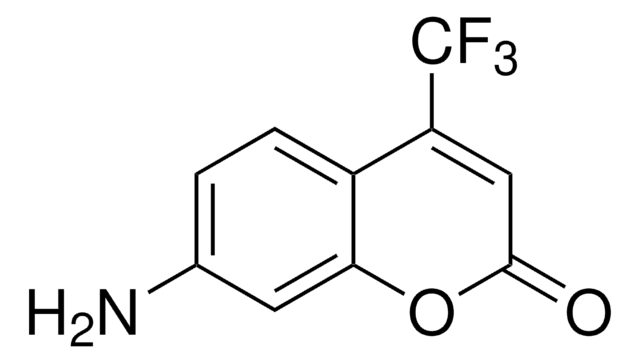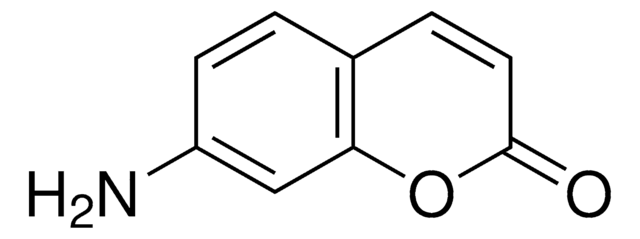08445
7-Amino-4-methyl-3-coumarinylacetic acid
BioReagent, suitable for fluorescence, ~90% (HPLC)
Synonyme(s) :
2H-1-Benzopyran-3-acetic acid, AMCA-H, Aminomethyl coumarin acetic acid
About This Item
Produits recommandés
Gamme de produits
BioReagent
Pureté
~90% (HPLC)
Forme
powder
Solubilité
DMF: soluble
DMSO: soluble
aqueous base: soluble
Fluorescence
λex 350 nm; λem 433 nm in methanol
Adéquation
suitable for fluorescence
Chaîne SMILES
CC1=C(CC(O)=O)C(=O)Oc2cc(N)ccc12
InChI
1S/C12H11NO4/c1-6-8-3-2-7(13)4-10(8)17-12(16)9(6)5-11(14)15/h2-4H,5,13H2,1H3,(H,14,15)
Clé InChI
QEQDLKUMPUDNPG-UHFFFAOYSA-N
Application
Conditionnement
Autres remarques
Mention d'avertissement
Warning
Mentions de danger
Conseils de prudence
Classification des risques
Eye Irrit. 2 - Skin Irrit. 2 - STOT SE 3
Organes cibles
Respiratory system
Code de la classe de stockage
11 - Combustible Solids
Classe de danger pour l'eau (WGK)
WGK 3
Point d'éclair (°F)
Not applicable
Point d'éclair (°C)
Not applicable
Équipement de protection individuelle
dust mask type N95 (US), Eyeshields, Gloves
Certificats d'analyse (COA)
Recherchez un Certificats d'analyse (COA) en saisissant le numéro de lot du produit. Les numéros de lot figurent sur l'étiquette du produit après les mots "Lot" ou "Batch".
Déjà en possession de ce produit ?
Retrouvez la documentation relative aux produits que vous avez récemment achetés dans la Bibliothèque de documents.
Les clients ont également consulté
Articles
Nitric oxide (NO) as a signal transporter in neurons, endothelial cells and in the immune system.
Notre équipe de scientifiques dispose d'une expérience dans tous les secteurs de la recherche, notamment en sciences de la vie, science des matériaux, synthèse chimique, chromatographie, analyse et dans de nombreux autres domaines..
Contacter notre Service technique











